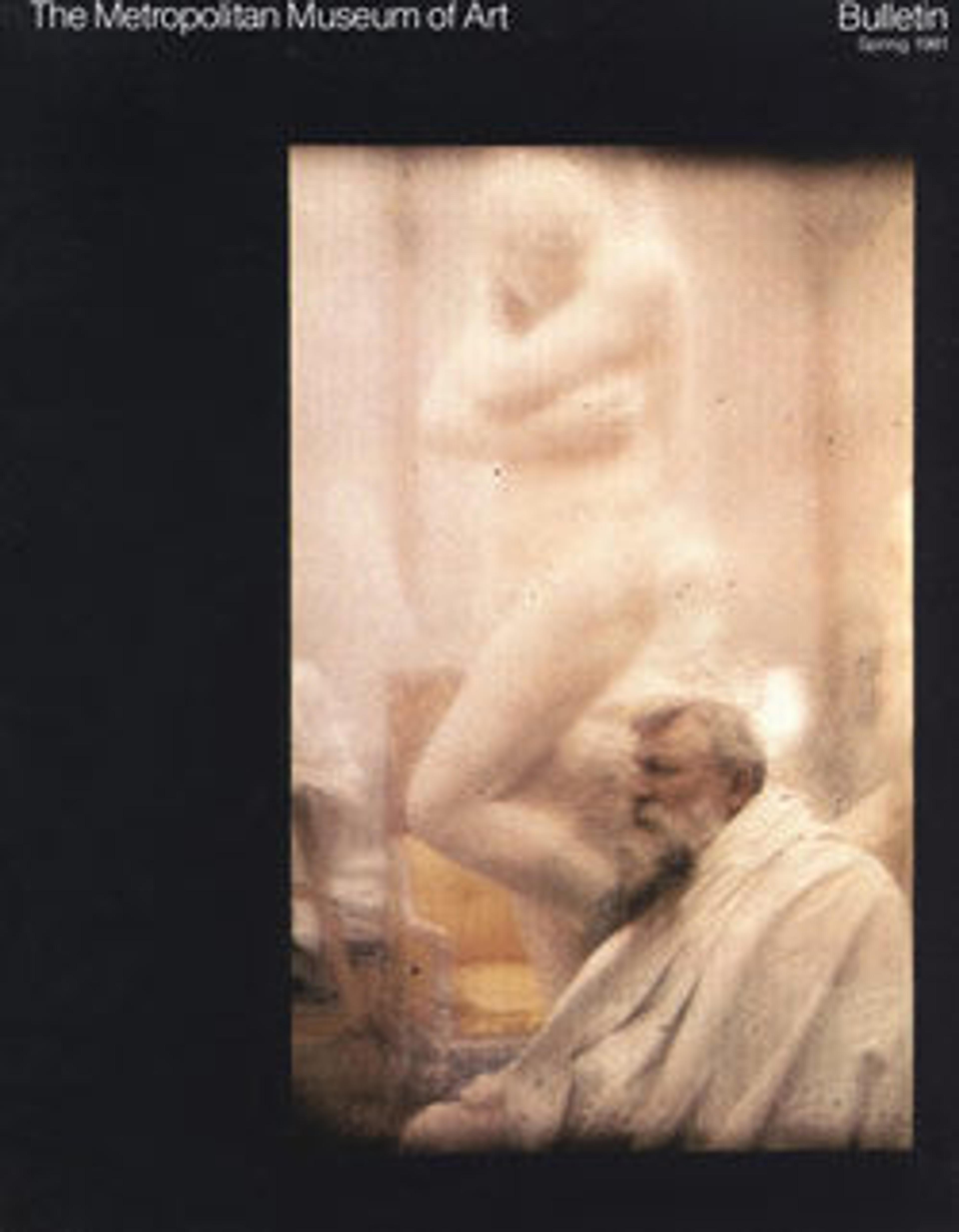Pygmalion and Galatea
According to classical mythology, the sculptor Pygmalion so desired a marble woman he had carved that Venus, the goddess of love, granted her life. Rodin depicts the statue of Galatea quickening at the sculptor’s touch, her glowing body emerging from unfinished stone. Yet this Pygmalion is not the handsome youth of tradition, but rather a stocky, bearded man resembling Rodin, whose name is prominently inscribed next to the mythical sculptor’s on the side of the base. In his quest to endow his figures with living force, Rodin regarded himself as a modern Pygmalion.
Pygmalion and Galatea is one of six Rodin marbles that came to The Met in 1910 through Thomas Fortune Ryan.
Pygmalion and Galatea is one of six Rodin marbles that came to The Met in 1910 through Thomas Fortune Ryan.
Artwork Details
- Title: Pygmalion and Galatea
- Artist: Auguste Rodin (French, Paris 1840–1917 Meudon)
- Date: modeled 1889, carved ca. 1908–9
- Culture: French
- Medium: Marble
- Dimensions: Overall (wt. confirmed): 38 1/4 × 35 × 30 in., 1068 lb. (97.2 × 88.9 × 76.2 cm, 484.4 kg)
- Classification: Sculpture
- Credit Line: Gift of Thomas F. Ryan, in memory of William M. Laffan, 1910
- Object Number: 10.31
- Curatorial Department: European Sculpture and Decorative Arts
More Artwork
Research Resources
The Met provides unparalleled resources for research and welcomes an international community of students and scholars. The Met's Open Access API is where creators and researchers can connect to the The Met collection. Open Access data and public domain images are available for unrestricted commercial and noncommercial use without permission or fee.
To request images under copyright and other restrictions, please use this Image Request form.
Feedback
We continue to research and examine historical and cultural context for objects in The Met collection. If you have comments or questions about this object record, please contact us using the form below. The Museum looks forward to receiving your comments.
